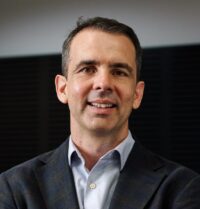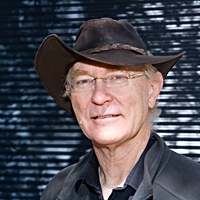Our Expert Speakers 2025
-

Peter Corke
Queensland University of Technology
Peter Corke is a robotics researcher and educator. He is a Distinguished Professor Emeritus at Queensland University of Technology and was the inaugural Director of the QUT Centre for Robotics. He was also the Director of the ARC Centre for Robotic Vision between 2014 – 2021. His research is concerned with enabling robots to see, and the application of robots to mining, agriculture and environmental monitoring. He created widely used open-source software for teaching and research, wrote the best selling textbook “Robotics, Vision, and Control”, created several MOOCs and the Robot Academy, and has won national and international recognition for teaching including 2017 Australian University Teacher of the Year. He is a fellow of the IEEE, the Australian Academy of Technology and Engineering, the Australian Academy of Science; former editor-in-chief of the IEEE Robotics & Automation magazine; founding editor of the Journal of Field Robotics; founding multi-media editor and executive editorial board member of the International Journal of Robotics Research; member of the editorial advisory board of the Springer Tracts on Advanced Robotics series; recipient of the Qantas/Rolls-Royce and Australian Engineering Excellence awards; and has held visiting positions at Oxford, University of Illinois, Carnegie-Mellon University and University of Pennsylvania. He received his undergraduate and masters degrees in electrical engineering and PhD from the University of Melbourne.
-

Dana Kulic
Monash University
Professor Dana Kulić develops autonomous systems that can operate in concert with humans, using natural and intuitive interaction strategies while learning from user feedback to improve and individualise operation over long-term use. In collaboration with Professor Elizabeth Croft, she pioneered systems to quantify and control safety during HRI based on both robot and human perception. Working with Professor Yoshihiko Nakamura at the University of Tokyo, she developed one of the first systems to implement continuous learning from demonstration. The system was a first step towards robots that can learn from non-experts, as it did not require the demonstrator to segment or scaffold their demonstration. Her research in rehabilitation technology enables highly accurate, non-invasive, measurement of human movement, which can be deployed in industrial settings for accurate measurement of operator movement. She serves as the Global Innovation Research Visiting Professor at the Tokyo University of Agriculture and Technology, and the August-Wilhelm Scheer Visiting Professor at the Technical University of Munich. Before coming to Monash, Professor. Kulić established the Adaptive Systems Lab at the University of Waterloo, and collaborated with colleagues to establish Waterloo as one of Canada’s leading research centres in robotics. She is a co-Investigator of the Waterloo Robohub, the largest robotics experimental facility in Canada, and a co-Principal Investigator of the Natural Sciences and Engineering Research Council (NSERC) Canadian Robotics Network, Canada’s only federally funded network in robotics. She has led a number of large research projects and collaborations with industry and user groups, including a strategic project grant in collaborative assembly and multiple grants developing automation for rehabilitation.
-

Simon Lucey
University of Adelaide
Simon Lucey (Ph.D.) is a professor in the School of Computer Science at the University of Adelaide, where he is the Director of the Australian Institute of Machine Learning (AIML). Prior to this he was an associate research professor at Carnegie Mellon University’s Robotics Institute (RI) in Pittsburgh USA. From 2017-2020, he was a principal scientist at the autonomous vehicle company Argo AI and spent time at the CSIRO (2009-2014). He has received various career awards including an ARC Future Fellowship (2009-2013). Simon’s research interests span computer vision, machine learning, and robotics. He enjoys drawing inspiration from AI researchers of the past to attempt to unlock computational and mathematic models that underlie the processes of visual perception.
-

Tom Drummond
University of Melbourne
Professor Drummond is based at the University of Melbourne. He studied a BA in mathematics at the University of Cambridge. In 1989 he emigrated to Australia and worked for CSIRO in Melbourne for four years before moving to Perth for his PhD in Computer Science at Curtin University. In 1998 he returned to Cambridge as a post-doctoral Research Associate and in 1991 was appointed as a University Lecturer. In 2010 he returned to Melbourne and took up a Professorship at Monash University. His research is principally in the field of real-time computer vision (ie processing of information from a video camera in a computer in real-time typically at frame rate), machine learning and robust methods. These have applications in augmented reality, robotics, assistive technologies for visually impaired users as well as medical imaging.
-

Richard Hartley
Australian National University
Richard Hartley is an Emeritus Professor with the ANU College of Engineering, Computing and Cybernetics. Richard is renowned as one of the founders of the field of multi-view geometry in computer vision – his text has received over 28,000 citations. Richard has been ANU since January 2001. He was also the Program Leader for the Autonomous Systems and Sensor Technology Program of NICTA. Richard worked at the General Electric Research and Development Center from 1985 to 2001, where he became involved with Image Understanding and Scene Reconstruction working with GE’s Simulation and Control Systems Division. This division built large-scale flight-simulators. Professor Hartley’s projects in this area were in the construction of terrain models and texture mosaics from aerial and satellite imagery. From 1995 he was GE project leader for a shared-vision project with Lockheed-Martin involving design and implementation of algorithms for an AFIS (fingerprint analysis) system being developed under a Lockheed-Martin contract with the FBI. This involved work in feature extraction, interactive fingerprint editing and fingerprint database matching. In 2000, he co-authored (with Andrew Zisserman) a book for Cambridge University Press, summarizing the previous decade’s research in this area. (Over 60,000 citations and an h-index of 78).
-

Yulia Sandamirskaya
ZHAW Zurich University of Applied Sciences
-

Dimity Miller
Queensland University of Technology
Dimity is a Chief Investigator with the QUT Centre for Robotics, and a Lecturer with the QUT School of Electrical Engineering and Robotics. She obtained her PhD in 2021 from QUT, which was recognised by an Executive Dean’s Commendation for Outstanding Doctoral Thesis Award in 2022. Her research expertise is in reliable robotic vision – operating at the intersection of deep learning, computer vision, and robotics. In particular, she is passionate about understanding when and why computer vision models may fail in robotic applications, and developing techniques to mitigate this. Her research interests span across topics including uncertainty estimation, object detection, continuous learning, deep learning introspection, metrics for assessing model performance, and spatiotemporal learning.
-

Feras Dayoub
University of Adelaide
Dr Feras Dayoub is a Senior Lecturer with the School of Computer Science at the University of Adelaide and the Australian Institute for Machine Learning (AIML). He is also an Associate Investigator with QUT Centre for Robotics (QCR). He served as a Chief Investigator of the ARC Centre of Excellence for Robotic Vision (concluded in 2020). His research focuses on enabling the reliable deployment of computer vision and machine learning on mobile robots in real-world environments. He has extensive experience in applied robotic vision research resulting from his work on exciting projects such as AGRobotic detection of weed in farms using deep learning, vision-enabled autonomous underwater vehicles (AUV) to protect the Great Barrier Reef from Crown-of-Thorns Starfish and vision-based infrastructure inspection using unmanned aerial vehicles (UAV). He has also lectured in advanced robotics topics for undergraduates, where he taught Bayesian approaches to robot localisation, mapping, and Simultaneous Localisation and Mapping (SLAM).
-

Donald G Dansereau
University of Sydney
Dr Donald Dansereau is a senior lecturer in the School of Aerospace, Mechanical and Mechatronic Engineering, and the Perception Theme Lead for the Sydney Institute for Robotics and Intelligent Systems. His work explores how new imaging devices can help robots see and do, encompassing the design, fabrication, and deployment of new imaging technologies. In 2004 he completed an MSc at the University Calgary, receiving the Governor General’s Gold Medal for his pioneering work in light field processing. In 2014 he completed a PhD on underwater robotic vision at the Australian Centre for Field Robotics, followed by postdoctoral appointments at QUT and Stanford University. Donald’s industry experience includes physics engines for video games, computer vision for microchip packaging, and chip design for automated electronics testing.
-

Previous International Speakers
2021
Hanna Kurniawati (Australian National University)
Gamini Dissanyake (University of Technology Sydney)
Fabio Ramos (University of Sydney)2020
Tobi Delbruck (ETH Zurich and The Institute of Neuroinformatics, Zurich)
Stefan Leutenegger (Imperial College London)
Donald Dansereau (University of Sydney)2019
Laura Leal-Taixé (Technical University of Munich)
Seth Hutchinson (Georgia Institute of Technology)
Jose Neira (University of Zaragoza)
Silvere Bonnabel (Mines ParisTech)
Tarek Hamel (University of Nice Sophia Antipolis)2018
Margarita Chli (ETH Zurich)
Vincent LePetit (University of Bordeaux)
Yarin Gal (University of Oxford)
Andrea Cherubini (University of Montpellier)2017
Davide Scaramuzza (University of Zurich)
Simon Lucey (Carnegie Mellon University)
Javier Civera (University of Zaragoza)
Sebastien Rougeaux (Seeing Machines)2016
Frank Dellaert (Georgia Institute of Technology)
Jana Kosecka (George Mason University)
Paul Newman (University of Oxford)2015
Raquel Urtasun (University of Toronto / Uber)
Andrew Davison (Imperial College London)
Fredrik Kahl (Chalmers University of Technology)
Lourdes De Agapito Vicente (University College London)








